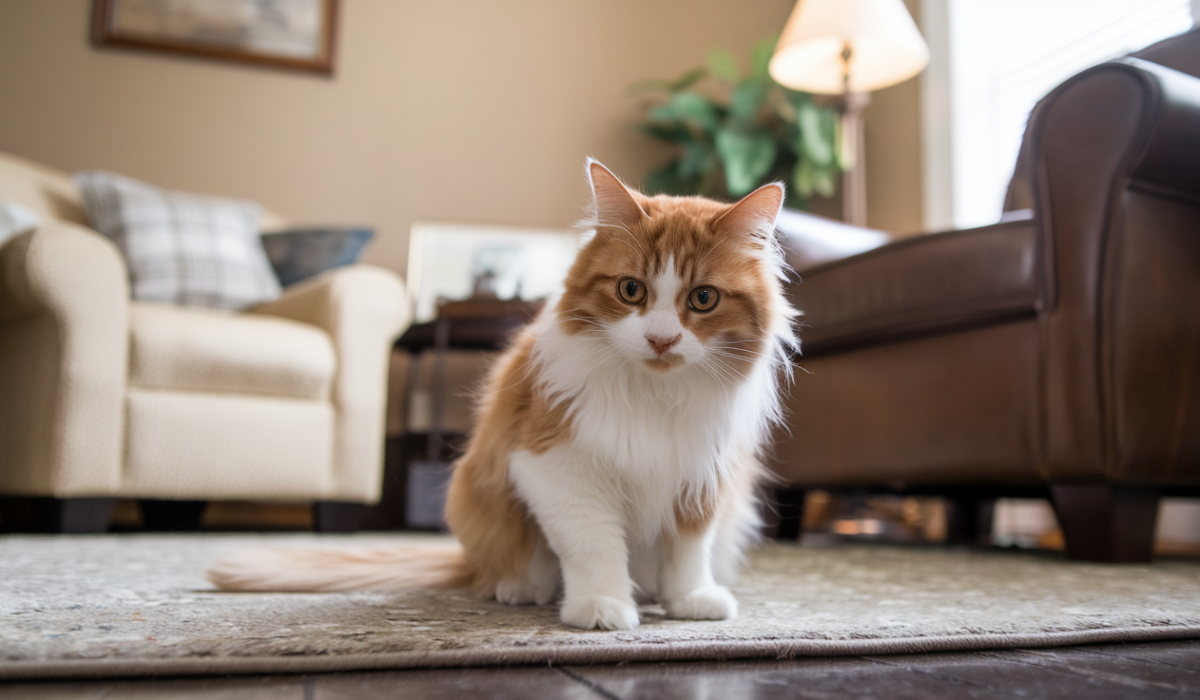The first time I laid eyes on Buster, he was trembling in the corner of the shelter, eyes wide with fear. His body language spoke volumes—tail tucked, ears flattened, and a constant look of unease. It broke my heart to think of what he had endured before being rescued. I couldn’t help but wonder: How does healing in rescued cats truly happen? How does a cat recover from a life filled with nothing but fear?
Healing in rescued cats is a delicate process that takes time, patience, and love. Cats like Buster don’t just forget their past overnight, but with the right care and understanding, healing in rescued cats becomes possible. Watching a once-terrified cat slowly regain trust is one of the most rewarding experiences, proving that even the most broken spirits can find comfort again.
Buster’s story is one of transformation, not just of his body, but of his spirit. It’s a testament to the power of love and patience when healing from emotional scars, especially in cats rescued from neglect or abuse. His journey to emotional healing was not a quick one, but it was filled with milestones of courage, small victories, and an abundance of care.
The Silent Pain of a Rescue
Buster had been found wandering the streets, covered in dirt and with noticeable injuries, possibly from a fight or neglect. His physical wounds were the least of his concerns. It was his emotional state that needed the most attention. He arrived at the shelter terrified, unable to trust anyone. While he wasn’t aggressive, he would retreat to the furthest corner, shying away from any human interaction.
Emotional healing in rescued cats is often the hardest part of rescue. It’s not visible like a scar or a wound. But it’s just as real, just as painful. Buster’s fear was his protective shield, a response to the trauma he’d lived through. But like many cats in similar situations, he just needed time and the right environment to begin his healing process.
The Role of Patience in Healing
I remember the first few days with Buster. He wouldn’t look at me when I entered the room. His body remained stiff as I spoke gently to him, trying to reassure him that he was safe now. Patience became my most important tool. I resisted the urge to rush things. I didn’t try to pick him up immediately or force interactions. Instead, I spent quiet hours sitting in the room with him, allowing him to approach me on his own terms.
For many cats like Buster, the key to emotional healing lies in giving them the space they need. It’s about building trust one step at a time, even if it feels like no progress is being made. It’s the small actions—like offering food or softly talking to them—that can slowly break down the walls of fear.
The Breakthrough Moment
After weeks of slow, steady progress, Buster surprised me one evening. He walked over to me, his body still slightly stiff but his eyes no longer filled with terror. I sat quietly, allowing him to approach. He brushed against my leg—a moment that, at the time, felt like a monumental breakthrough. For the first time, he wasn’t retreating. He wasn’t hiding. He was seeking connection.
The emotional healing in rescued cats doesn’t happen overnight. But in Buster’s case, this moment marked the beginning of a more confident, trusting cat. Over time, he learned to seek attention and affection. He even started to play, something I hadn’t seen him do in the early days of his rescue. The more comfortable he became, the more his true personality began to shine through. He was a loving, affectionate cat, eager to bond and show love.
Finding His Forever Home
Buster’s story doesn’t just end with his recovery—it culminates in his adoption into a forever home that had been waiting for him all along. His new family had experience with rescue cats and understood the importance of continued patience. When Buster finally settled into his new home, his fear began to melt away completely. He found comfort in the cozy corners of the house and formed a deep bond with his new human companions. He was no longer the fearful, withdrawn cat I had first met. He was happy, playful, and, most importantly, loved.
The Power of Love and Patience
Buster’s journey is a reminder of how transformative patience and love can be in the emotional healing in rescued cats. For cats that have been through trauma, recovery is often not just about providing food and shelter—it’s about creating an environment where they can slowly learn to trust, feel safe, and eventually flourish. If you’re ready to help a rescued cat on their journey, check out our Cat Adoption Guide: Creating the Perfect Forever Home for essential tips on building a space where true healing can happen.
Each rescued cat has its own timeline. Some may take days to warm up, others weeks or months. But the rewards are immeasurable. Healing in rescued cats is not instant, but with patience and love, transformation happens. Buster’s fear was replaced with trust, and that trust became the foundation for a life filled with joy.
If you’re considering fostering or adopting a cat with a past, remember this: healing in rescued cats takes time, but the love and patience you give can make all the difference. Every rescued cat deserves the chance to heal, and you can be the one to help them take that first step toward a better life. Healing in rescued cats is a journey, and your kindness can help turn fear into love, one small step at a time.


